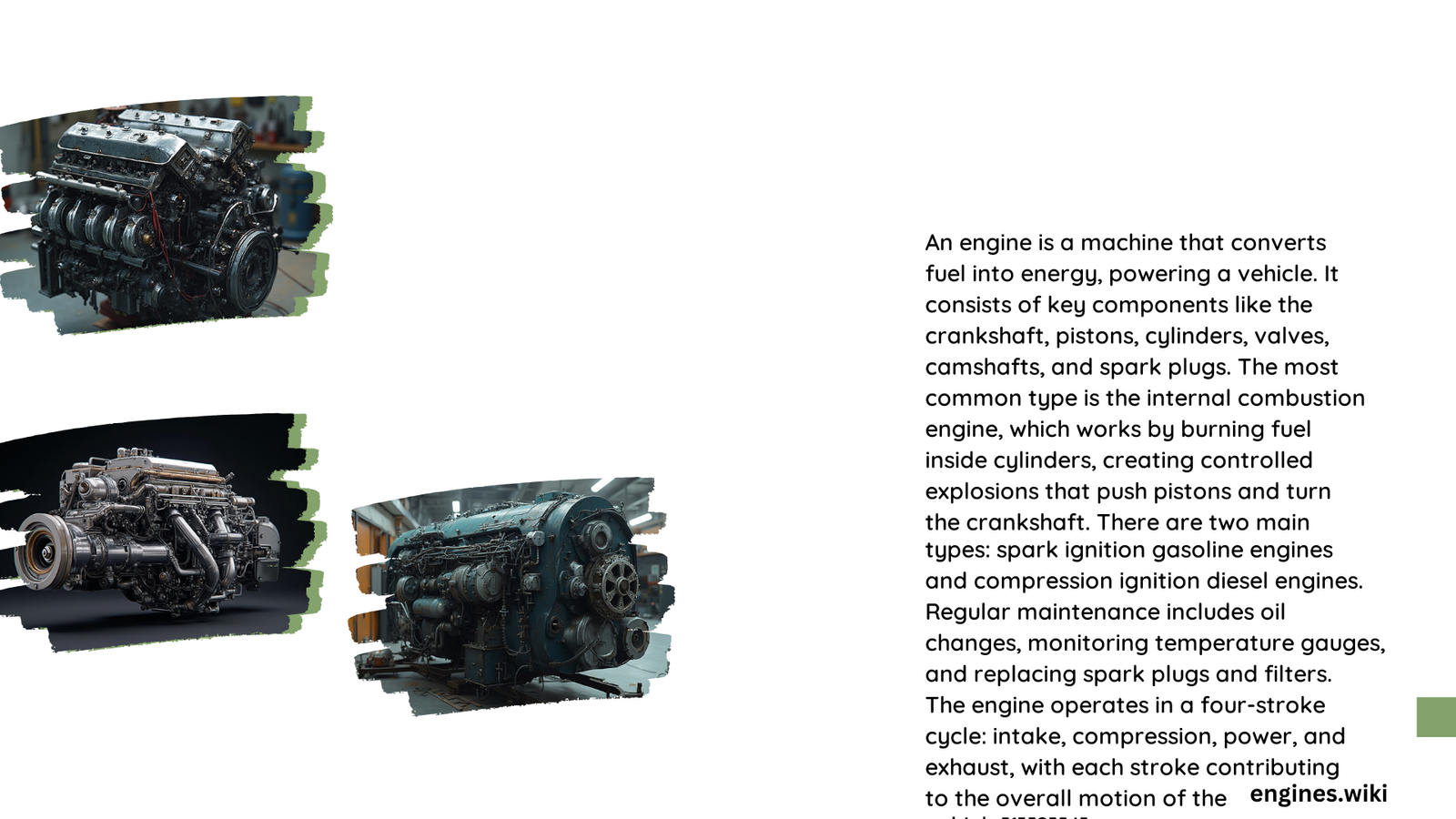Understanding Engine: Comprehensive Technical Insights
Modern vehicle engines represent complex technological ecosystems where precision engineering meets advanced computational analysis. Understanding engine performance requires deep insights into multiple interconnected systems, involving real-time data processing, machine learning algorithms, and sophisticated diagnostic techniques that transform raw mechanical operations into intelligent, adaptive mechanisms.
What Are the Core Components of an Engine?
An engine consists of several critical components that work synergistically:
- Fundamental Mechanical Elements
- Cylinder block
- Pistons
- Crankshaft
- Valvetrain
-
Combustion chamber
-
Supporting Systems
- Fuel injection mechanism
- Cooling system
- Lubrication network
- Electrical management unit
How Do Modern Engines Process Performance Data?
Real-Time Data Collection Mechanisms
| Data Collection Tool | Sampling Frequency | Primary Function |
|---|---|---|
| neoVI | 10 Hz | Comprehensive vehicle data retrieval |
| Fire 2 | 10 Hz | Engine performance monitoring |
| Vehicle Spy | 10 Hz | Diagnostic data analysis |
Key Performance Parameters
Modern engines leverage multiple parameters for optimal performance:
- Engine Operating Point (EOP)
- Instantaneous engine torque
- Instantaneous engine speed
-
Ignition fuel control ratio
-
Driver Behavior Vector (DBV)
- Vehicle speed tracking
- Acceleration patterns
- Predictive performance modeling
What Machine Learning Techniques Enhance Engine Diagnostics?
Deep learning models play a transformative role in understanding engine performance through:
- Predictive Analysis
- Real-time behavior forecasting
- Performance optimization
-
Anomaly detection
-
Advanced Semantic Reasoning
- Logic-based decision making
- High-accuracy diagnostics
- Autonomous system integration
What Challenges Exist in Engine Performance Analysis?
Critical challenges include:
- Data Complexity
- Integrating multi-source sensor information
- Managing environmental variability
-
Ensuring consistent data quality
-
Computational Requirements
- High-frequency data processing
- Real-time decision-making algorithms
- Robust machine learning models
How Can Professionals Improve Engine Understanding?
Recommended strategies:
- Continuous learning about emerging technologies
- Investing in advanced diagnostic tools
- Understanding interdisciplinary approaches
- Embracing computational modeling techniques
Technical Insights and Future Perspectives
The future of understanding engine performance lies in:
– Artificial intelligence integration
– Enhanced semantic reasoning
– Predictive maintenance technologies
– Autonomous vehicle compatibility
Practical Implementation Considerations
Cost Factors:
– Hardware investments
– Software licensing
– Computational infrastructure
– Ongoing training requirements
Conclusion
Understanding engine performance transcends traditional mechanical analysis, representing a sophisticated intersection of engineering, data science, and computational intelligence.

